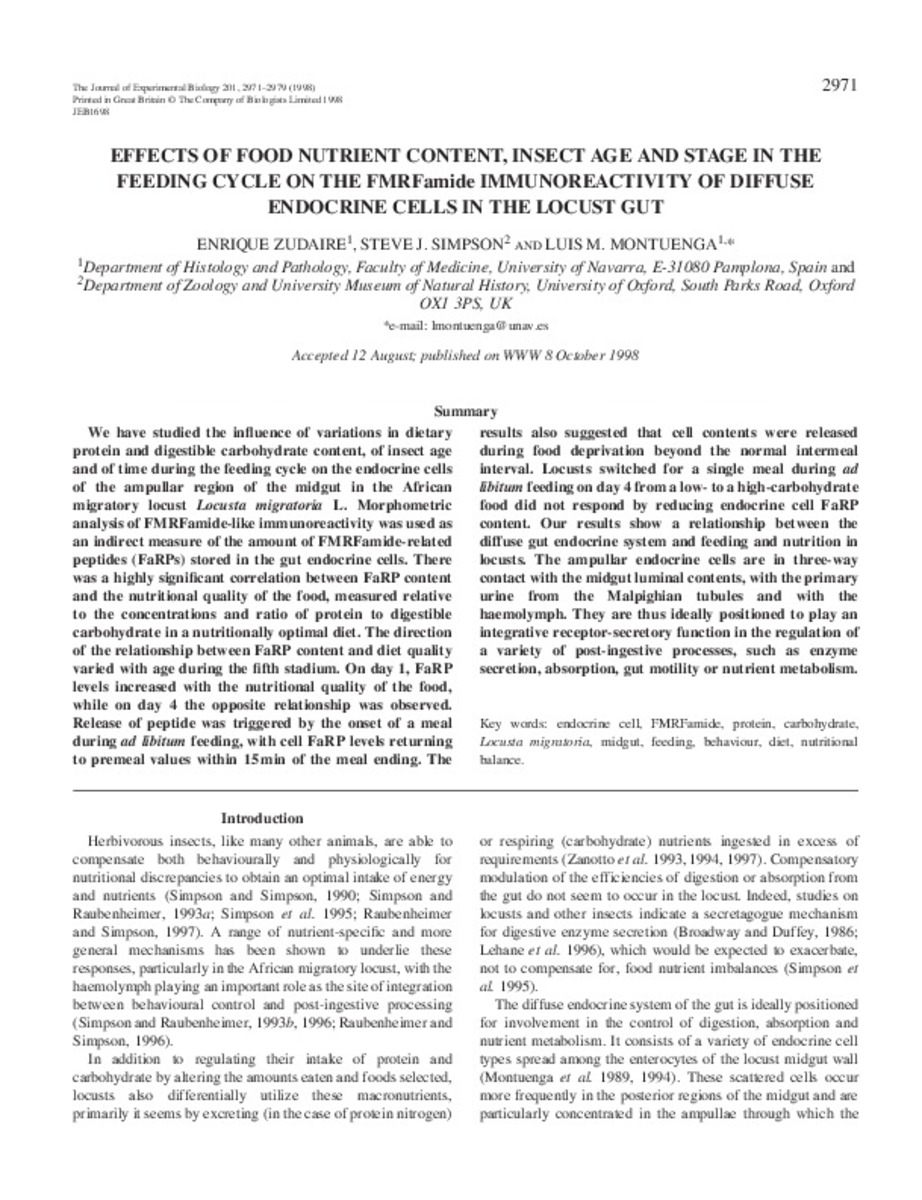Effects of food nutrient content, insect age and stage in the feeding cycle on the FMRFamide immunoreactivity of diffuse endocrine cells in the locust gut
Keywords:
Endocrine cell
FMRFamide
Protein
Carbohydrate
Locusta migratoria
Midgut
Feeding
Behaviour
Diet
Nutritional balance
Publisher:
Company of Biologists
Citation:
Zudaire E, Simpson SJ, Montuenga LM. Effects of food nutrient content, insect age and stage in the feeding cycle on the FMRFamide immunoreactivity of diffuse endocrine cells in the locust gut. J Exp Biol 1998 Nov;201(Pt 21):2971-2979.
Statistics and impact
0 citas en

0 citas en

Items in Dadun are protected by copyright, with all rights reserved, unless otherwise indicated.










